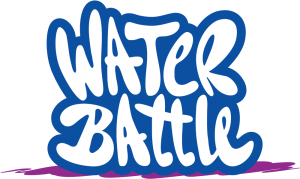One of the most frequently asked questions about gamification solutions is; “How long will end-users play this game?” This is a legitimate question because even for regular entertainment games, there is a tendency for people to get bored and either stop playing or switch to a different game. You can’t expect people to stay engaged in your gamification solution without making adaptations and adjustments. This article sheds light on what water utilities should consider and do if they want their gamification solution to stay ever-green.
in this context, the phrase ‘keeping a gamification solution ever-green” means the steps needed to ensure your solution remains relevant for target players over time. This can be viewed as;
- Creating new variations of your current solution periodically
- Upgrading different parts of your solution (adding and upgrading features)
It is important to emphasize at this point that successfully ensuring your gamification solution stays ever-green is highly dependent on the nature of the problem(s) being solved and who the target players are.
The problem you are solving determines the required solution lifespan
The question to answer here is; how long would you need your gamification solution to run for? For example, water companies aspire to create behavioural change among their consumers. They also understand that behavioural change does not happen in a few days, that is, it takes time. Therefore a gamification solution for behavioural change would require a higher frequency of changes and adjustments to keep target players engaged.
Another example is when a solution is going to be administered for a few days to enhance, for instance, the transfer of certain information during a conference. In this case, the need and urgency for keeping the solution ever-green dwindle sharply.
The nature of the problem also determines which part of your solution will need to be adjusted periodically. For example, let’s take a hypothetical case of a solution that seeks to educate adults about good energy-conservation habits in a fun way. Assuming this solution has 2 parts, a game and an energy consumption tracker. If it’s established that the target players are keener on understanding their consumption, then it makes sense to concentrate on the energy-consumption tracker aspects of the solution. You can start thinking of what new insights you can provide or how you can simplify the existing ones. In this hypothetical situation, you see that the focus will be more on the tracking system than the game because the problem requires it.
So the nature of the problem must be noted as very important when considering any form of adjustments to your solution. This leads us to the
Do you know your target players?
The issue of target players is very important. There are several aspects of your target players you must consider, such as age, social status and tech-savviness. This means there are questions to be answered, one of which is;
- Does the target players outgrow the solution?
For example, if the problem you want to be solved requires that you target the same group of players (12-year-olds) for the next 5 years. In this situation, you can imagine that the interests of a 12-year-old will not be the same when they turn 17. Therefore, it is incumbent on you to make the needed adjustments to match the interests of the target players at all stages.
On the other hand, if you have a scenario where the target group is and will always be, for example, pupils in grade 6, then you generally have a different type or form of adjustment to make. The attention here would be to pay attention to changing trends in just one age group. Note here that the interest of an age group changes over generations.
So these examples are just to help you understand the importance of taking your target players into account as you plan to make your gamification solution ever-green. Once you have the above sorted then you can decide on exactly what is needed to make the solution ever-green. So the interests of 6-year-olds now will probably not be the same in a decade.
The right data gives insight into what change is needed
For this, you need to gather as much data as you can from the target players. This is where you need extensive knowledge of data collection and analysis. Both qualitative and quantitative data will give a holistic view of how your target players interact with your game. Without data, you cannot accurately determine what changes are needed.
This is the point where a competent gamification partner is needed. Your partner should know how to extract the required data and also advise you on what data you need to look at.
When data collection and analysis is correctly done, the following questions can be answered;
- How long does the average player spend on the solution and how often do they use it?
- Which parts of the game do they spend the most and least time on?
- At what point in the game do players drop off?
This is how you keep your gamification solution ever-green. Understand the nature of the problem you are solving, know who your target players are going to be and analyse as much data as possible. With these, you will make the necessary updates and adjustments in a timely fashion to keep your solution relevant overtime for its intended purpose.
Would you like to know more about the Water Battle? Please feel free to contact us!
Also check out this Short (video) intro to Water Battle, an example of a serious game for a water conservation project and Water Battle Factsheet

